
Chester William Nimitz was a fleet admiral in the United States Navy. He played a major role in the naval history of World War II as Commander in Chief, US Pacific Fleet, and Commander in Chief, Pacific Ocean Areas, commanding Allied air, land, and sea forces during World War II.
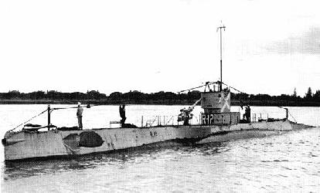
USS R-12 (SS-89) was an R-class coastal and harbor defense submarine of the United States Navy.
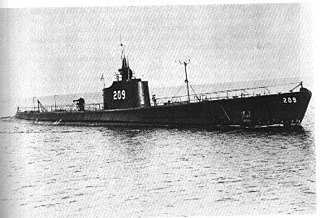
USS Grayling (SS-209) was the tenth Tambor-class submarine to be commissioned in the United States Navy in the years leading up to the country's December 1941 entry into World War II. She was the fourth ship of the United States Navy to be named for the grayling. Her wartime service was in the Pacific Ocean. She completed seven war patrols in the following 20 months, and is credited with the sinking of over 20,000 tons of Japanese merchant shipping and warships. Grayling received six battle stars for her World War II service. She was declared lost with all hands in September 1943. Of the twelve Tambor-class submarines, only five survived the war.

USS Sargo (SS-188), the lead ship of her class of submarine, was the first ship of the United States Navy to be named for the sargo fish.

USS Drum (SS-228) is a Gato-class submarine of the United States Navy, the first Navy ship named after the drum, a type of fish. Drum is a museum ship in Mobile, Alabama, at Battleship Memorial Park.
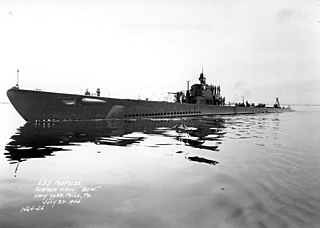
USS Porpoise (SS–172), the fifth United States Navy ship to bear her name, was the lead ship of her class of submarines.
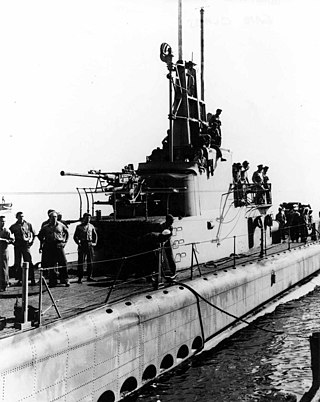
USS Gabilan (SS-252), a Gato-class submarine, was the only ship of the United States Navy to be named for the gabilan, an eagle ray of the Gulf of California.

USS Mingo (SS-261) — a Gato-class submarine — was the first ship of the United States Navy to be named for the mingo snapper.
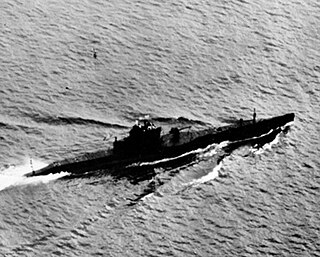
USS S-31 (SS-136) was a first-group S-class submarine of the United States Navy.
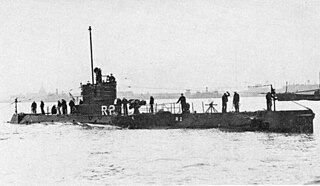
USS R-2 (SS-79) was an R-class coastal and harbor defense submarine of the United States Navy.

USS R-6 (SS-83) was an R-class coastal and harbor defense submarine of the United States Navy.

USS R-16 (SS-93) was an R-class coastal and harbor defense submarine of the United States Navy.
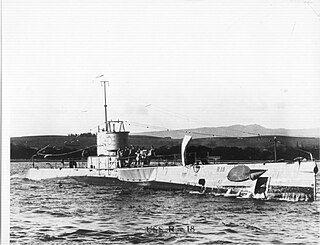
USS R-18 (SS-95) was an R-class coastal and harbor defense submarine of the United States Navy.

USS C-5 (SS-16) was one of five C-class submarines built for the United States Navy in the first decade of the 20th century.

USS Trever (DD-339/DMS-16/AG-110) was a Clemson-class destroyer of the United States Navy in commission from 1922 to 1923 and from 1930 to 1945. Converted to a destroyer minesweeper in 1940, she served in the Pacific throughout World War II, including during the Japanese attack on Pearl Harbor, the Guadalcanal campaign, and the New Georgia campaign.

USS Case (DD-370) was a Mahan-class destroyer in the United States Navy before and during World War II. She was the second ship named for Augustus Ludlow Case. Case was berthed at Pearl Harbor when the Japanese struck on 7 December 1941, then served in the United States Pacific Fleet until the end of World War II.

The United States D-class submarines were a trio of submarines built for the United States Navy in the first decade of the 20th century. All three ships served during World War I providing training for crews and officers on the U.S. East Coast, before the class was decommissioned and sold for scrap in 1922.

I-201 was the name ship of her class of high-speed submarines built for the Imperial Japanese Navy during World War II. She was commissioned in February 1945, and the war ended before she could carry out an operational patrol. She surrendered to the United States Navy in 1945 and was sunk as a target in 1946.
I-73 was an Imperial Japanese Navy Kaidai type cruiser submarine of the KD6A sub-class commissioned in 1937 that served during World War II. One month after participating in the Japanese attack on Pearl Harbor, she was sunk by the United States Navy submarine USS Gudgeon (SS-211) in January 1942.

Naval Base Hawaii was a number of United States Navy bases in the Territory of Hawaii during World War II. At the start of the war, much of the Hawaiian Islands was converted from tourism to a United States Armed Forces base. With the loss of US Naval Base Philippines in Philippines campaign of 1941 and 1942, Hawaii became the US Navy's main base for the early part of the island-hopping Pacific War against Empire of Japan. Naval Station Pearl Harbor was founded in 1899 with the annexation of Hawaii.




















